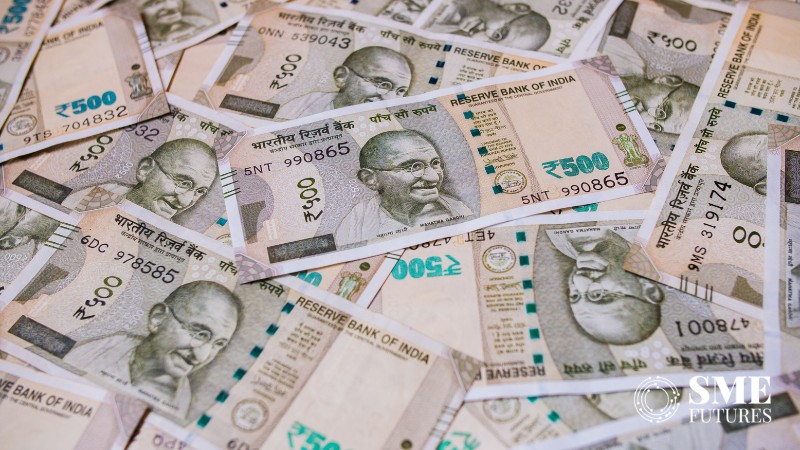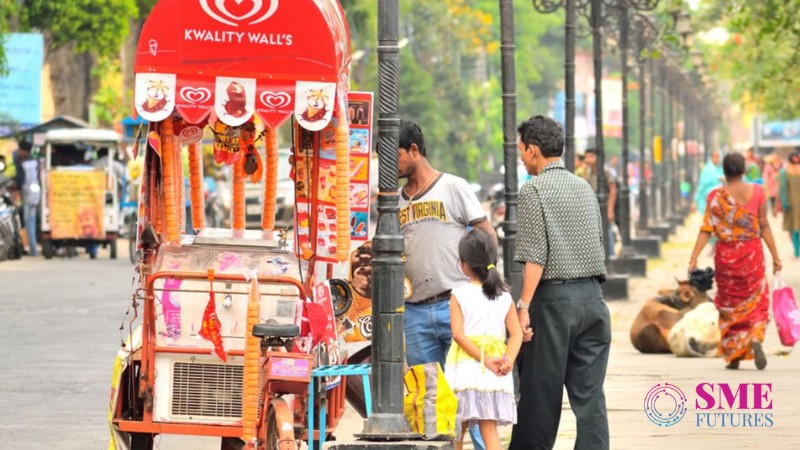Will business in hotel industry see a comfortable stay soon?
Along with other sectors such as manufacturing, agriculture, and utility services, the ongoing economic slowdown has also hit the hotel industry. Rising crude prices and higher airfares have significantly influenced the hospitality segment.
Anushruti Singh September 26, 2019

MORE IN Focus
IPL’s impact on hospitality: Boosting tourism, hotel bookings, and revenue surge
Will 45-day payment rule revolutionise MSME support?
The future of digital banking: Lessons from Paytm Payments Bank’s regulatory hurdles
Empowering women imperative for inclusive development in India
Unravelling the Paytm Payments Bank snafu: An insider’s perspective on why this fintech fumbled
Along with other sectors such as manufacturing, agriculture, and utility services, the ongoing economic slowdown has also hit the hotel industry. Rising crude prices and higher airfares have significantly influenced the hospitality segment. Due to the increasing pressure on pockets, cost slicing measures have prompted lower business-traveller entries as of late. Dip in occupancy level and new supply destinations have also led to hotels to slash their rates.According to the government data, the growth was slowed to a seven-year low of 5 per cent in April to June quarter from 8 per cent a year ago. Ministry of Statistics and Programme Implementation informs that the slowdown is primarily due to a sharp dip in the manufacturing sector and agriculture output. As per the result, consumer demand and private investment have weakened amid global trade frictions and dampening business sentiment.“Apart from the global economic crisis owing to trade disputes, Indian industry is also witnessing the much talked about slowdown. Last quarter wasn’t what we expected it to be. Moreover, I believe, we are not going to see any incremental improvement either in the short term,” Rattan Keswani, Deputy Managing Director of Lemon Tree Hotels, a Delhi based midscale hospitality brand told SMEFutures.com. It seems the global slowdown and economic slump has crept into the hospitality segment too. Asia’s third-biggest economy has cooled to a five-year low, while a lingering shadow-bank crisis dampening discretionary spending, is further affecting the hotel segment. Also, the grounding of Jet Airways intensely hit Indian hotels.Even the Economic Survey, tabled earlier this year, states that the sectors that saw deceleration include tourism and hotel. As per the survey, ‘Travel receipts have slowed somewhat during April-December, 2018 after posting strong growth in 2017-18 (April-December), which is in line with the moderation in foreign tourist arrivals (FTAs) during this period.’According to tourism ministry, the Foreign Tourist Arrivals (FTA) grew just by 1.8 per cent to 3.93 million in the first quarter of this year, which doesn’t excite the industry at all. Increased airfares further decreased domestic tourism, whether pleasure or business. According to Keswani, this has led to a severe demand-supply gap. “An entire airline has gone off; therefore, the capacity to travel at an effective rate has reduced. It’s not that people don’t want to travel, but it has become so expensive due to dissolved Jet Airways, and the inability of other airlines to fill the capacity and in turn deliver demand to us,” he explains.After the eight years long hitch, Hospitality sector showed positive signs as the pan India average occupancy rates pulled up a bit this year. According to an ICRA report, pan-India average occupancy improved marginally by one percentage point Y-o-Y to ~66 per cent in 9M FY2019, with monthly occupancies at the highest levels since FY2009, during 9M FY2019. The Average Room Rate (ARR) grew by ~2-3 per cent to ~ ₹ 5,900 in 9M FY2019. However, the growth was short-lived. “Hotel segment improved after a low cycle of eight years, however recent terrible economic indicators in last 5 to 6 months have brought back the slump while collapse of Jet Airways has added further woes as airfares shot up. It seems the hotel industry is in a different direction at the moment.” Keswani says.Headwinds forced investments to slow down in the segment. A report ‘India Hospitality Industry Review’ by HVS ANAROCK confirms the same. The report states that 2018 was slow in terms of hotel investments, with total hotel transaction volumes in dollar terms contracting to their lowest since 2005- from US$ 158 mn in 2005 to a mere 78 mn in 2018. However, in terms of Indian Rupee value, the total transaction volume recorded was 6 per cent higher than in 2005. Economy blues have also impacted hotel stocks. According to media reports, shares of leading luxury groups such as Indian Hotels Company Ltd (Taj group) and EIH Ltd (Oberoi group) have fallen 8-9 per cent from where they were towards the end of June. Recently, a media agency also reported that the luxury hotel chain controlled by the Tata Group is looking to sell some assets and avoid owning new properties to further pare debt, as it braces for a slump in consumer spending.Indian Hotels Co, Tata’s listed firm that operates the Taj brand, plans to dispose of individual budget inns in the nation’s non-metro areas and lease them back for a fee, Puneet Chhatwal, managing director and chief executive officer informs the media. “We are moving our focus to more management contracts rather than constructing hotels of our own,” Chhatwal explains. “We have no plans to put our legacy and flagship properties under sale and leaseback.”To dig deeper, we tried to talk to the Hotel Association of India, the apex body for the segment, on the concerns of the hotel industry. However, the association declined any comments on the slowdown. However, it is evident; the Hotel Industry witnessed a low phase, post demonetisation at the end of 2016. RevPAR growth dropped from 5.5 per cent in 2016 to 1.9 per cent in 2018. The issue in the last three years was two-sided. On the one hand, consumer demand dropped, and on the other, supply continued to grow, which outpaced demand, at least in a few markets such as Pune and Ahmedabad. While again, after a little optimism, the growth dropped in 2019 with declining economic scenario.A detailed report on the hospitality segment titled ‘India Inbound Tourism: Unlocking the opportunities’ by FICCI and Yes Bank suggests remedial measures to boost up the sector for fair results. It indicates that the government should take steps such as rationalising GST rate for hotels and incentivising private participation to boost the tourism sector as it holds enormous potential to push economic growth and job creation.‘GST applicable to hotels, varies according to the room tariff. Rooms with tariff ₹ 2,500-7,500 per night attract a rate of 18 per cent and rooms with tariff of ₹ 7,500 and above per night attract a rate of 28 per cent. It makes the premium/ luxury hotels and resorts in India among the most taxed in the world, higher than cities such as New York, London and Paris,’ the report reveals.It also shares that higher taxes on hotels make the segment less competitive as compared to other Asian peers. ‘It is recommended to reduce GST with a ceiling of 18 per cent on hotel rooms to make the segment more competitive.’. It also suggests, conceiving of a National Authority and Advisory Council, release of Tourism Competitiveness Index, greater coordination at state level and creation of land bank repository.The future of the hotel industry otherwise looks bright, as various other vital factors drive the market. India’s attractiveness as a medical tourism destination; steadily growing Meetings, Incentives, Conferences and Exhibitions (MICE) segment; and, an increasing fondness among millennials to travel are to name a few.Also, according to CARE Ratings insights, the expected future inventory in 11 major markets (across categories – only branded) is lower at around 49,400 rooms for the five years from FY18 to FY23. Therefore, with increasing demand with improvement in economic activities and smaller room additions, the major markets in the industry are expected to sustain the average room rates (ARRs) going forward and grow at an average of 3.5-4.5 per cent per annum.Consequently, the occupancy is also expected to inch up to an average of about 68-70 per cent by the end of FY23 compared with 66.6 per cent in FY18. Accordingly, the industry is expected to see an increase in room revenue at the rate of about 10-12 per cent CAGR over these five years.Pankaj Giroti, a hospitality consultant, speaking at the Indian Hospitality Expo held at Greater Noida, also opines, “As tourism and travel is one of the largest economic generators, hotel industry takes a huge traction out of it. Changes in lifestyle, growing disposable income and expanding infrastructure will bring out more opportunities for hotel sector as domestic tourism is growing fast.”Past few years have seen an upward trend of economy hotels. Emergence of such budget hotels in India is catering to the majority of the population that seeks an affordable stay. According to a global hospitality advisory firm Horwath HTL, between March 2002 and March 2017, while the supply of chain-affiliated rooms grew at the rate of 11 per cent a year, the mid-priced segment expanded at a compound annual growth rate of over 15 per cent.With regards to this, Keswani also has an optimistic outlook, as he says, the industry is undergoing a blip but will hopefully revive soon. “I don’t think it’s a long slowdown, but a bit of a blip. I am hoping this short mid-term impact will hopefully end in the next four or five months. There is nothing in the sectoral trends that points out the hotel segment will not pick up after.”
Economy blues have also impacted hotel stocks. According to media reports, shares of leading luxury groups such as Indian Hotels Company Ltd (Taj group) and EIH Ltd (Oberoi group) have fallen 8-9 per cent from where they were towards the end of June. Recently, a media agency also reported that the luxury hotel chain controlled by the Tata Group is looking to sell some assets and avoid owning new properties to further pare debt, as it braces for a slump in consumer spending.Indian Hotels Co, Tata’s listed firm that operates the Taj brand, plans to dispose of individual budget inns in the nation’s non-metro areas and lease them back for a fee, Puneet Chhatwal, managing director and chief executive officer informs the media. “We are moving our focus to more management contracts rather than constructing hotels of our own,” Chhatwal explains. “We have no plans to put our legacy and flagship properties under sale and leaseback.”To dig deeper, we tried to talk to the Hotel Association of India, the apex body for the segment, on the concerns of the hotel industry. However, the association declined any comments on the slowdown. However, it is evident; the Hotel Industry witnessed a low phase, post demonetisation at the end of 2016. RevPAR growth dropped from 5.5 per cent in 2016 to 1.9 per cent in 2018. The issue in the last three years was two-sided. On the one hand, consumer demand dropped, and on the other, supply continued to grow, which outpaced demand, at least in a few markets such as Pune and Ahmedabad. While again, after a little optimism, the growth dropped in 2019 with declining economic scenario.A detailed report on the hospitality segment titled ‘India Inbound Tourism: Unlocking the opportunities’ by FICCI and Yes Bank suggests remedial measures to boost up the sector for fair results. It indicates that the government should take steps such as rationalising GST rate for hotels and incentivising private participation to boost the tourism sector as it holds enormous potential to push economic growth and job creation.‘GST applicable to hotels, varies according to the room tariff. Rooms with tariff ₹ 2,500-7,500 per night attract a rate of 18 per cent and rooms with tariff of ₹ 7,500 and above per night attract a rate of 28 per cent. It makes the premium/ luxury hotels and resorts in India among the most taxed in the world, higher than cities such as New York, London and Paris,’ the report reveals.It also shares that higher taxes on hotels make the segment less competitive as compared to other Asian peers. ‘It is recommended to reduce GST with a ceiling of 18 per cent on hotel rooms to make the segment more competitive.’. It also suggests, conceiving of a National Authority and Advisory Council, release of Tourism Competitiveness Index, greater coordination at state level and creation of land bank repository.The future of the hotel industry otherwise looks bright, as various other vital factors drive the market. India’s attractiveness as a medical tourism destination; steadily growing Meetings, Incentives, Conferences and Exhibitions (MICE) segment; and, an increasing fondness among millennials to travel are to name a few.Also, according to CARE Ratings insights, the expected future inventory in 11 major markets (across categories – only branded) is lower at around 49,400 rooms for the five years from FY18 to FY23. Therefore, with increasing demand with improvement in economic activities and smaller room additions, the major markets in the industry are expected to sustain the average room rates (ARRs) going forward and grow at an average of 3.5-4.5 per cent per annum.Consequently, the occupancy is also expected to inch up to an average of about 68-70 per cent by the end of FY23 compared with 66.6 per cent in FY18. Accordingly, the industry is expected to see an increase in room revenue at the rate of about 10-12 per cent CAGR over these five years.Pankaj Giroti, a hospitality consultant, speaking at the Indian Hospitality Expo held at Greater Noida, also opines, “As tourism and travel is one of the largest economic generators, hotel industry takes a huge traction out of it. Changes in lifestyle, growing disposable income and expanding infrastructure will bring out more opportunities for hotel sector as domestic tourism is growing fast.”Past few years have seen an upward trend of economy hotels. Emergence of such budget hotels in India is catering to the majority of the population that seeks an affordable stay. According to a global hospitality advisory firm Horwath HTL, between March 2002 and March 2017, while the supply of chain-affiliated rooms grew at the rate of 11 per cent a year, the mid-priced segment expanded at a compound annual growth rate of over 15 per cent.With regards to this, Keswani also has an optimistic outlook, as he says, the industry is undergoing a blip but will hopefully revive soon. “I don’t think it’s a long slowdown, but a bit of a blip. I am hoping this short mid-term impact will hopefully end in the next four or five months. There is nothing in the sectoral trends that points out the hotel segment will not pick up after.” On this note, Keswani informs us that Lemon Tree Hotels is looking forward to foraying into the upscale segment soon, to tap out a wider variety of consumers. The name of these upscale hotels will be Aurika Hotels & Resorts. The firm has chosen Udaipur to open the first upscale property which will be called Aurika Udaipur and is going to open for guests in October or November this year. “I believe, in four to five years there are greater opportunities in midscale and upscale market because ample population belongs to this group and the consumers are ready to spend for better services,” Keswani says. Rapid urbanisation is increasingly making Tier 3 markets more relevant for hotel brands, with nearly a third of their new hotel signings coming from these cities, despite hotels being smaller than their Tier 1 variants.Jaideep Dang, Managing Director at JLL, Hotels and Hospitality Group, also concurred with Keswani. According to him, you can notice a deviation in the performance of the hospitality segment from current economic behaviour, despite the slow consumer demand. He says “This can be due to the commercial real estate market, which has witnessed a 20 per cent growth in office stock absorption and 1 per cent decline in vacancy rates across the top seven business cities in India. It gives the hotel industry hope in 2019, moving into 2020, so long as the services sector continues to drive growth in the commercial office market in major cities.”“With the latest reduction of GST from 28 per cent to 18 per cent applicable on room rates above ₹ 7,500 per night will provide a great fillip to the premium and luxury hotel sector.” he further adds.
On this note, Keswani informs us that Lemon Tree Hotels is looking forward to foraying into the upscale segment soon, to tap out a wider variety of consumers. The name of these upscale hotels will be Aurika Hotels & Resorts. The firm has chosen Udaipur to open the first upscale property which will be called Aurika Udaipur and is going to open for guests in October or November this year. “I believe, in four to five years there are greater opportunities in midscale and upscale market because ample population belongs to this group and the consumers are ready to spend for better services,” Keswani says. Rapid urbanisation is increasingly making Tier 3 markets more relevant for hotel brands, with nearly a third of their new hotel signings coming from these cities, despite hotels being smaller than their Tier 1 variants.Jaideep Dang, Managing Director at JLL, Hotels and Hospitality Group, also concurred with Keswani. According to him, you can notice a deviation in the performance of the hospitality segment from current economic behaviour, despite the slow consumer demand. He says “This can be due to the commercial real estate market, which has witnessed a 20 per cent growth in office stock absorption and 1 per cent decline in vacancy rates across the top seven business cities in India. It gives the hotel industry hope in 2019, moving into 2020, so long as the services sector continues to drive growth in the commercial office market in major cities.”“With the latest reduction of GST from 28 per cent to 18 per cent applicable on room rates above ₹ 7,500 per night will provide a great fillip to the premium and luxury hotel sector.” he further adds. Overall, based on the demand-supply dynamics, the hotel industry showcases a positive outlook, assuming this a short-term slowdown. The sector is looking forward to a reasonable growth upcycle starting this winter which will only get better in future.
Overall, based on the demand-supply dynamics, the hotel industry showcases a positive outlook, assuming this a short-term slowdown. The sector is looking forward to a reasonable growth upcycle starting this winter which will only get better in future.
 Economy blues have also impacted hotel stocks. According to media reports, shares of leading luxury groups such as Indian Hotels Company Ltd (Taj group) and EIH Ltd (Oberoi group) have fallen 8-9 per cent from where they were towards the end of June. Recently, a media agency also reported that the luxury hotel chain controlled by the Tata Group is looking to sell some assets and avoid owning new properties to further pare debt, as it braces for a slump in consumer spending.Indian Hotels Co, Tata’s listed firm that operates the Taj brand, plans to dispose of individual budget inns in the nation’s non-metro areas and lease them back for a fee, Puneet Chhatwal, managing director and chief executive officer informs the media. “We are moving our focus to more management contracts rather than constructing hotels of our own,” Chhatwal explains. “We have no plans to put our legacy and flagship properties under sale and leaseback.”To dig deeper, we tried to talk to the Hotel Association of India, the apex body for the segment, on the concerns of the hotel industry. However, the association declined any comments on the slowdown. However, it is evident; the Hotel Industry witnessed a low phase, post demonetisation at the end of 2016. RevPAR growth dropped from 5.5 per cent in 2016 to 1.9 per cent in 2018. The issue in the last three years was two-sided. On the one hand, consumer demand dropped, and on the other, supply continued to grow, which outpaced demand, at least in a few markets such as Pune and Ahmedabad. While again, after a little optimism, the growth dropped in 2019 with declining economic scenario.A detailed report on the hospitality segment titled ‘India Inbound Tourism: Unlocking the opportunities’ by FICCI and Yes Bank suggests remedial measures to boost up the sector for fair results. It indicates that the government should take steps such as rationalising GST rate for hotels and incentivising private participation to boost the tourism sector as it holds enormous potential to push economic growth and job creation.‘GST applicable to hotels, varies according to the room tariff. Rooms with tariff ₹ 2,500-7,500 per night attract a rate of 18 per cent and rooms with tariff of ₹ 7,500 and above per night attract a rate of 28 per cent. It makes the premium/ luxury hotels and resorts in India among the most taxed in the world, higher than cities such as New York, London and Paris,’ the report reveals.It also shares that higher taxes on hotels make the segment less competitive as compared to other Asian peers. ‘It is recommended to reduce GST with a ceiling of 18 per cent on hotel rooms to make the segment more competitive.’. It also suggests, conceiving of a National Authority and Advisory Council, release of Tourism Competitiveness Index, greater coordination at state level and creation of land bank repository.The future of the hotel industry otherwise looks bright, as various other vital factors drive the market. India’s attractiveness as a medical tourism destination; steadily growing Meetings, Incentives, Conferences and Exhibitions (MICE) segment; and, an increasing fondness among millennials to travel are to name a few.Also, according to CARE Ratings insights, the expected future inventory in 11 major markets (across categories – only branded) is lower at around 49,400 rooms for the five years from FY18 to FY23. Therefore, with increasing demand with improvement in economic activities and smaller room additions, the major markets in the industry are expected to sustain the average room rates (ARRs) going forward and grow at an average of 3.5-4.5 per cent per annum.Consequently, the occupancy is also expected to inch up to an average of about 68-70 per cent by the end of FY23 compared with 66.6 per cent in FY18. Accordingly, the industry is expected to see an increase in room revenue at the rate of about 10-12 per cent CAGR over these five years.Pankaj Giroti, a hospitality consultant, speaking at the Indian Hospitality Expo held at Greater Noida, also opines, “As tourism and travel is one of the largest economic generators, hotel industry takes a huge traction out of it. Changes in lifestyle, growing disposable income and expanding infrastructure will bring out more opportunities for hotel sector as domestic tourism is growing fast.”Past few years have seen an upward trend of economy hotels. Emergence of such budget hotels in India is catering to the majority of the population that seeks an affordable stay. According to a global hospitality advisory firm Horwath HTL, between March 2002 and March 2017, while the supply of chain-affiliated rooms grew at the rate of 11 per cent a year, the mid-priced segment expanded at a compound annual growth rate of over 15 per cent.With regards to this, Keswani also has an optimistic outlook, as he says, the industry is undergoing a blip but will hopefully revive soon. “I don’t think it’s a long slowdown, but a bit of a blip. I am hoping this short mid-term impact will hopefully end in the next four or five months. There is nothing in the sectoral trends that points out the hotel segment will not pick up after.”
Economy blues have also impacted hotel stocks. According to media reports, shares of leading luxury groups such as Indian Hotels Company Ltd (Taj group) and EIH Ltd (Oberoi group) have fallen 8-9 per cent from where they were towards the end of June. Recently, a media agency also reported that the luxury hotel chain controlled by the Tata Group is looking to sell some assets and avoid owning new properties to further pare debt, as it braces for a slump in consumer spending.Indian Hotels Co, Tata’s listed firm that operates the Taj brand, plans to dispose of individual budget inns in the nation’s non-metro areas and lease them back for a fee, Puneet Chhatwal, managing director and chief executive officer informs the media. “We are moving our focus to more management contracts rather than constructing hotels of our own,” Chhatwal explains. “We have no plans to put our legacy and flagship properties under sale and leaseback.”To dig deeper, we tried to talk to the Hotel Association of India, the apex body for the segment, on the concerns of the hotel industry. However, the association declined any comments on the slowdown. However, it is evident; the Hotel Industry witnessed a low phase, post demonetisation at the end of 2016. RevPAR growth dropped from 5.5 per cent in 2016 to 1.9 per cent in 2018. The issue in the last three years was two-sided. On the one hand, consumer demand dropped, and on the other, supply continued to grow, which outpaced demand, at least in a few markets such as Pune and Ahmedabad. While again, after a little optimism, the growth dropped in 2019 with declining economic scenario.A detailed report on the hospitality segment titled ‘India Inbound Tourism: Unlocking the opportunities’ by FICCI and Yes Bank suggests remedial measures to boost up the sector for fair results. It indicates that the government should take steps such as rationalising GST rate for hotels and incentivising private participation to boost the tourism sector as it holds enormous potential to push economic growth and job creation.‘GST applicable to hotels, varies according to the room tariff. Rooms with tariff ₹ 2,500-7,500 per night attract a rate of 18 per cent and rooms with tariff of ₹ 7,500 and above per night attract a rate of 28 per cent. It makes the premium/ luxury hotels and resorts in India among the most taxed in the world, higher than cities such as New York, London and Paris,’ the report reveals.It also shares that higher taxes on hotels make the segment less competitive as compared to other Asian peers. ‘It is recommended to reduce GST with a ceiling of 18 per cent on hotel rooms to make the segment more competitive.’. It also suggests, conceiving of a National Authority and Advisory Council, release of Tourism Competitiveness Index, greater coordination at state level and creation of land bank repository.The future of the hotel industry otherwise looks bright, as various other vital factors drive the market. India’s attractiveness as a medical tourism destination; steadily growing Meetings, Incentives, Conferences and Exhibitions (MICE) segment; and, an increasing fondness among millennials to travel are to name a few.Also, according to CARE Ratings insights, the expected future inventory in 11 major markets (across categories – only branded) is lower at around 49,400 rooms for the five years from FY18 to FY23. Therefore, with increasing demand with improvement in economic activities and smaller room additions, the major markets in the industry are expected to sustain the average room rates (ARRs) going forward and grow at an average of 3.5-4.5 per cent per annum.Consequently, the occupancy is also expected to inch up to an average of about 68-70 per cent by the end of FY23 compared with 66.6 per cent in FY18. Accordingly, the industry is expected to see an increase in room revenue at the rate of about 10-12 per cent CAGR over these five years.Pankaj Giroti, a hospitality consultant, speaking at the Indian Hospitality Expo held at Greater Noida, also opines, “As tourism and travel is one of the largest economic generators, hotel industry takes a huge traction out of it. Changes in lifestyle, growing disposable income and expanding infrastructure will bring out more opportunities for hotel sector as domestic tourism is growing fast.”Past few years have seen an upward trend of economy hotels. Emergence of such budget hotels in India is catering to the majority of the population that seeks an affordable stay. According to a global hospitality advisory firm Horwath HTL, between March 2002 and March 2017, while the supply of chain-affiliated rooms grew at the rate of 11 per cent a year, the mid-priced segment expanded at a compound annual growth rate of over 15 per cent.With regards to this, Keswani also has an optimistic outlook, as he says, the industry is undergoing a blip but will hopefully revive soon. “I don’t think it’s a long slowdown, but a bit of a blip. I am hoping this short mid-term impact will hopefully end in the next four or five months. There is nothing in the sectoral trends that points out the hotel segment will not pick up after.” On this note, Keswani informs us that Lemon Tree Hotels is looking forward to foraying into the upscale segment soon, to tap out a wider variety of consumers. The name of these upscale hotels will be Aurika Hotels & Resorts. The firm has chosen Udaipur to open the first upscale property which will be called Aurika Udaipur and is going to open for guests in October or November this year. “I believe, in four to five years there are greater opportunities in midscale and upscale market because ample population belongs to this group and the consumers are ready to spend for better services,” Keswani says. Rapid urbanisation is increasingly making Tier 3 markets more relevant for hotel brands, with nearly a third of their new hotel signings coming from these cities, despite hotels being smaller than their Tier 1 variants.Jaideep Dang, Managing Director at JLL, Hotels and Hospitality Group, also concurred with Keswani. According to him, you can notice a deviation in the performance of the hospitality segment from current economic behaviour, despite the slow consumer demand. He says “This can be due to the commercial real estate market, which has witnessed a 20 per cent growth in office stock absorption and 1 per cent decline in vacancy rates across the top seven business cities in India. It gives the hotel industry hope in 2019, moving into 2020, so long as the services sector continues to drive growth in the commercial office market in major cities.”“With the latest reduction of GST from 28 per cent to 18 per cent applicable on room rates above ₹ 7,500 per night will provide a great fillip to the premium and luxury hotel sector.” he further adds.
On this note, Keswani informs us that Lemon Tree Hotels is looking forward to foraying into the upscale segment soon, to tap out a wider variety of consumers. The name of these upscale hotels will be Aurika Hotels & Resorts. The firm has chosen Udaipur to open the first upscale property which will be called Aurika Udaipur and is going to open for guests in October or November this year. “I believe, in four to five years there are greater opportunities in midscale and upscale market because ample population belongs to this group and the consumers are ready to spend for better services,” Keswani says. Rapid urbanisation is increasingly making Tier 3 markets more relevant for hotel brands, with nearly a third of their new hotel signings coming from these cities, despite hotels being smaller than their Tier 1 variants.Jaideep Dang, Managing Director at JLL, Hotels and Hospitality Group, also concurred with Keswani. According to him, you can notice a deviation in the performance of the hospitality segment from current economic behaviour, despite the slow consumer demand. He says “This can be due to the commercial real estate market, which has witnessed a 20 per cent growth in office stock absorption and 1 per cent decline in vacancy rates across the top seven business cities in India. It gives the hotel industry hope in 2019, moving into 2020, so long as the services sector continues to drive growth in the commercial office market in major cities.”“With the latest reduction of GST from 28 per cent to 18 per cent applicable on room rates above ₹ 7,500 per night will provide a great fillip to the premium and luxury hotel sector.” he further adds. Overall, based on the demand-supply dynamics, the hotel industry showcases a positive outlook, assuming this a short-term slowdown. The sector is looking forward to a reasonable growth upcycle starting this winter which will only get better in future.
Overall, based on the demand-supply dynamics, the hotel industry showcases a positive outlook, assuming this a short-term slowdown. The sector is looking forward to a reasonable growth upcycle starting this winter which will only get better in future.










